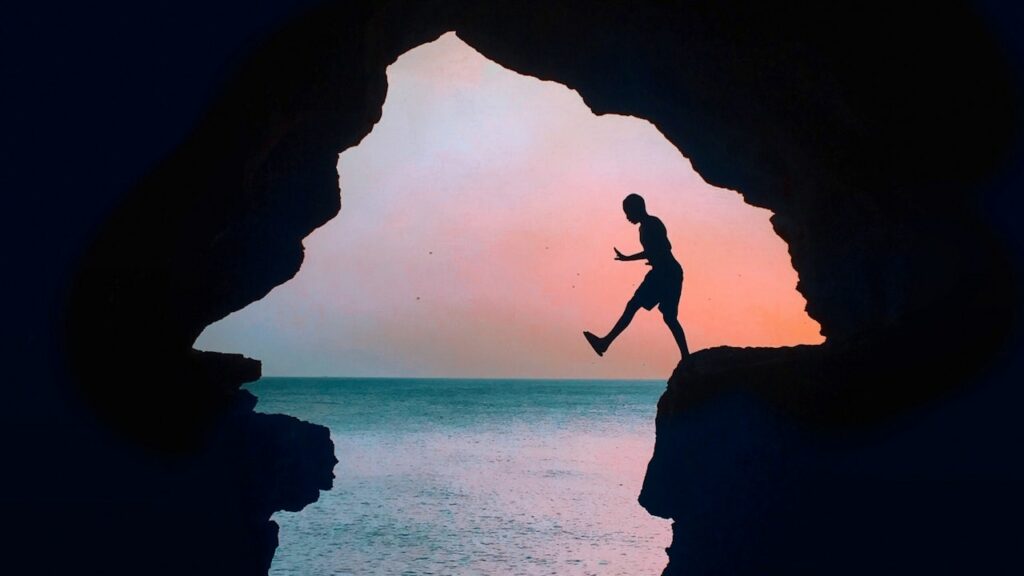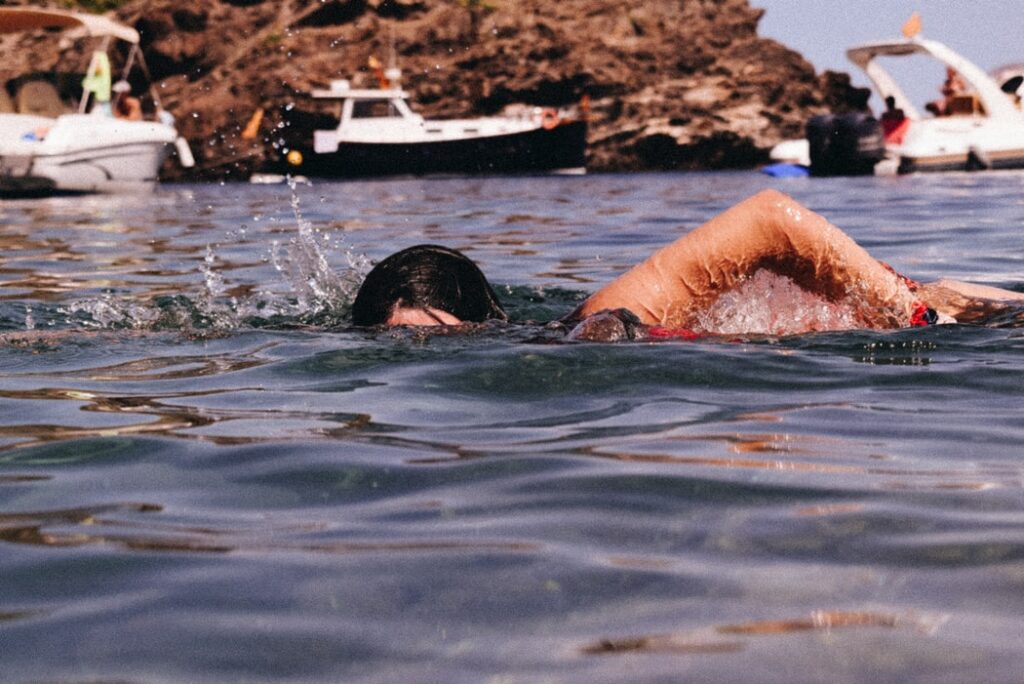Deep Water Soling (or psicobloc) is the ultimate climbing package. Beautiful panoramic views? Check. Free climbing above water with multiple rock climbing and boulder problems? Check.
Although DWS is every bit as dangerous as it is awesome. Because you’ll be free climbing (in a sense), you have a greater chance of falling and getting injured. But wait, how can you get injured if you fall in the water?
For starters, you could hit debris and sustain an injury. Even if you ignore debris, water isn’t the best cushion when falling from great heights. In fact, after a certain height, you’ll have enough kinetic energy that hitting the water would be the scientific equivalent of hitting solid cement.
But that doesn’t mean you can’t go Deep Water Soloing without being worried every second of it. I love psicobloc-ing and have visited most of the famous crags in the United States. In my opinion, the key is learning important DWS techniques, such as the correct way of falling into the water. And most importantly, having proper DWS climbing gear.
DWS Climbing Gear: What do you need?
I know what you’re thinking and yes, this article is about climbing shoes. But first, we need to clear up some common misconceptions. Deep Water Soloing is called “solo climbing” because it’s usually done without a belayer.
In no way does that mean Deep Water Soloing is supposed to be done without any climbing (or protective) gear at all. You can if you want, but I wouldn’t recommend it.

So, what type of climbing gears should you have while sending crags?
For Deep Water Soloing gear, you should have a light helmet (to protect your head from an incorrect fall), a chalk bag (preferably liquid chalk), clothing that is comfortable even when wet, and climbing shoes that can sustain their grip after getting wet.
Except for these, you should also have some extra clothing, a spare chalk bag, and some towels. Don’t climb with them. Instead, they keep them on the ship or the rock where you set up camp. You can also bring a short access rope with you in case you might need one.
Pro tip: To help you climb better, I recommend rubbing some liquid chalk on your elbows and hands beforehand. This is done so that you can reapply chalk onto your fingers mid-climbing.
The issue with a chalk bag is that it’s designed for dry chalk, and all the chalk will just flow out once you hit the water for the first time. You can also buy shorts with a zipper and keep a small pouch filled with liquid chalk inside.
DWS Climbing Shoes: What do you need to know?
Back when I started deep water soloing for the first time, I had a lot of questions on my mind. And the biggest of them all was what shoes do I wear when psicobloc-ing.
Classic rock climbing shoes seemed like a wrong choice by default, but are they really? And if they’re, what are some of the DWS-friendly shoes that I could buy.
Sure, some people prefer climbing barefoot when deep water soloing, but I ain’t one of them. I’m a stickler for proper protective gear and, more importantly, the extra grip that comes with shoes engineered for climbing purposes. After a lot of research and trial & error, I did find some answers.
1. Can you wear regular climbing shoes while psicobloc-ing?
You can wear regular climbing shoes when piscobloc-ing. They won’t damage that easily by just getting wet every now and then if you take proper care afterward. However, I wouldn’t recommend using your new and expensive climbing shoes for Deep Water Soloing.
2. When do shoes getting wet become a big problem?
The biggest problem with using standard climbing shoes while Deep Water Soloing is the seawater, specifically the salt inside it. Standard climbing shoes have a leather base which can potentially get torn off because of the salt crystals in seawater.
This problem will only occur if you go DWS regularly, so it’s not a big deal if you go to the crags every now and then. That’s also why I don’t recommend using new and expensive climbing shoes and go soloing with your old pair that you wouldn’t mind getting wet.

You can also prevent or suppress the leather from going bad by taking proper care of your shoes after the climb. This mean thoroughly washing your climbing shoes in freshwater to rinse all the seawater and tiny salt crystals.
Then just let them air dry. Don’t heat them or put them in the sun because that can also affect the leather.
3. How are DWS climbing shoes different?
Honestly, there’s no such thing as “DWS climbing shoes.” It should be, but it isn’t. Does that mean you have no choice except to send your leather climbing shoes to martyrdom? No. There’s an alternative – synthetic uppers.
The synthetic upper climbing shoes are an excellent alternative to standard leather-based climbing shoes for Deep Water Soloing. Synthetic uppers don’t get ruined from saltwater (or seawater) as fast. They’ll also dry quickly and won’t change shape (shrink or stretch) because of water.
How to buy DWS climbing shoes?
Buying climbing shoes for deep water soloing is relatively straightforward: find out the synthetic uppers that suit your style. Wear them and try to send an artificial route to ensure the design and grip are to your preference. I recommend buying shoes of the same make as your regular climbing shoes.
Alternatively, you don’t need to “buy” climbing shoes if you’re going with the leather ones. I prefer using an older pair instead of ruining a newer one.
Essential Things to Know Before Going Deep Water Soloing
Here are some tips that have worked well for me in the past:
- Check your climbing gear an hour before to ensure everything is fine.
- Keep spares of clothing and liquid chalk.
- Practice! Practice! Practice! – it’s fun but dangerous. Chances of injury reduce significantly with practice the techniques.
- Learn how to jump into the water properly.
- Be prepared. Make sure you know everything about the place you’re gonna be climbing on – from weather conditions to the debris under the rock.
- And finally, never go alone. Always have a partner with you in case of an emergency and to have boatloads of fun! (pun intended)
And finally, if you’re confused about where to go, here are some of the places that I absolutely adore. Maybe you’ll like them too.
Within the United States: Lake Travis-Pace Bend Park (Texas), Ka’anapali (Maui), Lake Powell (Utah), Summersville Lake (West Virginia), South Point (Hawaii), and Kinkaid Lake, Jackson County (Illinois).
Overseas: Majorca (Spain), Azores (Portugal), Railay (Thailand), Ha Long Bay (Vietnam), Blue Grotto (Malta), and Olympos (Turkey).

